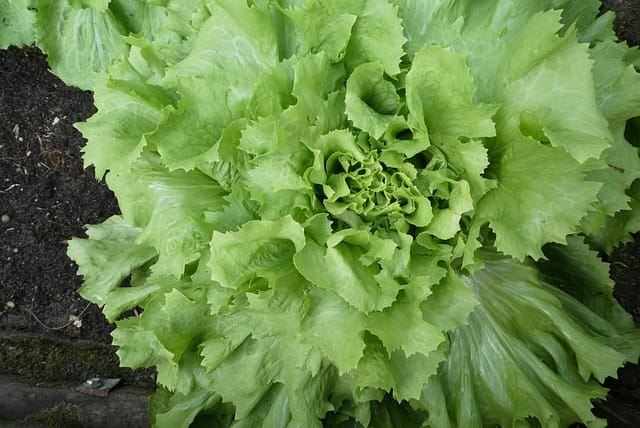How to grow Endives
The endive vegetable is a versatile leafy green that is rich in vitamins and minerals

In this article:
- Introduction to Endives
- Choosing the Right Endive Variety
- Selecting a Suitable Growing Location
- Preparing the Soil for Endive Cultivation
- Starting Endive Seeds
- Transplanting Endive Seedlings
- Proper Endive Watering Techniques
- Fertilizing Endives for Healthy Growth
- Controlling Weeds in the Endive Bed
- Managing Pest and Disease Issues in Endives
- Harvesting Endives at the Right Time
- Storing and Preserving Endives
- Common Troubleshooting Tips for Endives
- Unique Uses and Recipes for Endives
- Conclusion and Final Tips for Successful Endive Gardening
Introduction to Endives
The endive vegetable is a versatile leafy green that is rich in vitamins and minerals. It is a member of the chicory family and is known for its slightly bitter taste. Growing endives in your own garden can be a rewarding experience, both in terms of taste and health benefits.
Choosing the Right Endive Variety
There are different varieties of endives available, such as curly endive, escarole, and Belgian endive. Consider the flavor, texture, and growth requirements of each variety before making your selection. Ensure that you choose a variety that is well-suited to your climate and growing conditions.
Selecting a Suitable Growing Location
Endives prefer a sunny location with well-draining soil. Choose a spot in your garden that receives at least 6-8 hours of direct sunlight each day. Avoid areas with excessive shade or poor soil drainage.
Preparing the Soil for Endive Cultivation
Before planting endives, prepare the soil by removing any weeds, rocks, or debris. Loosen the soil to a depth of 8-10 inches and amend it with organic matter such as compost or well-rotted manure. This will improve the soil's fertility, drainage, and moisture retention.
Starting Endive Seeds
Sow endive seeds indoors 6-8 weeks before the last frost date for your region. Fill seed trays with a seed starting mix and plant the seeds at a depth of 1/4 inch. Keep the soil moist and provide warmth and sufficient light for germination.
Transplanting Endive Seedlings
When the seedlings reach a height of 3-4 inches, they can be transplanted into the garden. Choose a cool day for transplanting and handle the seedlings carefully to avoid damaging their delicate roots. Space the seedlings 8-10 inches apart to allow for proper growth and airflow.
Proper Endive Watering Techniques
Endives require consistent moisture to thrive, but they should not be overwatered. Water the plants deeply and evenly, ensuring that the soil is moist but not waterlogged. Mulching around the plants can help retain soil moisture and reduce weed growth.
Fertilizing Endives for Healthy Growth
Endive plants benefit from regular feeding. Apply a balanced organic fertilizer or a slow-release granular fertilizer according to the package instructions. Avoid over-fertilization, as this can lead to excessive leaf growth and poor flavor.
Controlling Weeds in the Endive Bed
Weeds compete with endive plants for nutrients, water, and sunlight. Keep the endive bed weed-free by regularly pulling out any emerging weeds. Mulching can also help suppress weed growth. Be careful when weeding around endive plants to avoid damaging their shallow roots.
Managing Pest and Disease Issues in Endives
Endives are relatively resistant to pests and diseases. However, occasional problems may arise, such as aphids, slugs, or fungal diseases. Monitor your plants regularly and take prompt action if you notice any signs of pest or disease damage. Organic pest control methods, such as neem oil or insecticidal soap, can be effective in managing these issues.
Harvesting Endives at the Right Time
Endives can be harvested when the leaves reach a usable size, typically around 60-90 days after planting. Use a sharp knife or garden scissors to cut the outer leaves at the base. Harvest only what you need, as endives are best consumed fresh.
Storing and Preserving Endives
Endives can be stored in a refrigerator for up to 2 weeks. Wrap them in a damp paper towel and place them in a sealed plastic bag. For longer-term preservation, blanch and freeze the endive leaves or consider pickling them for a delicious and tangy snack.
Common Troubleshooting Tips for Endives
If you encounter any issues with your endive plants, such as yellowing leaves, stunted growth, or wilting, it could be due to factors like nutrient deficiencies, overwatering, or pests. Identify the problem and take appropriate measures, such as adjusting watering schedules or applying organic fertilizers.
Unique Uses and Recipes for Endives
Endives can be enjoyed in numerous dishes, both raw and cooked. They add a pleasant crunch and slightly bitter taste to salads, sandwiches, and stir-fries. Try making endive boats filled with cheese or using them as a substitute for traditional lettuce wraps. The possibilities are endless!
Conclusion and Final Tips for Successful Endive Gardening
Growing endives can be a rewarding experience that offers fresh and nutritious produce. By following the proper steps, from seed starting to harvesting, you can enjoy a bountiful supply of endives. Remember to choose the right variety, provide suitable growing conditions, and address any issues that arise promptly. With a little care and attention, your endive garden will flourish!
